Arbor Day Foundation USA Interactive Map
Do you know how many Tree Campus Healthcare facilities are in Wisconsin or how many trees were planted by Arbor Day Foundation partners in the state? Find this and other eye-opening information by visiting the new Arbor Day Reporting Dashboard. Scroll to select Wisconsin on the left side of the page to see state-specific data. Select a tab at the top to see specific information about the Tree City USA, Tree Campus or Tree Line programs. Continue reading “Arbor Day Foundation Reporting Dashboard”
Did you know?
Invasives And Imposters: Native Look-Alikes To Know
By Wisconsin DNR
With 145 invasive plants regulated under Wisconsin’s Invasive Species Rule NR40, it can be challenging to identify some of these plants while out in the woods.
The task can be further complicated by the presence of native lookalikes – plants that have a similar appearance to harmful invasive species but are actually native plants that benefit wildlife, pollinators and ecosystems in Wisconsin.
Continue reading “Invasives And Imposters: Native Look-Alikes To Know”
Watch Out!
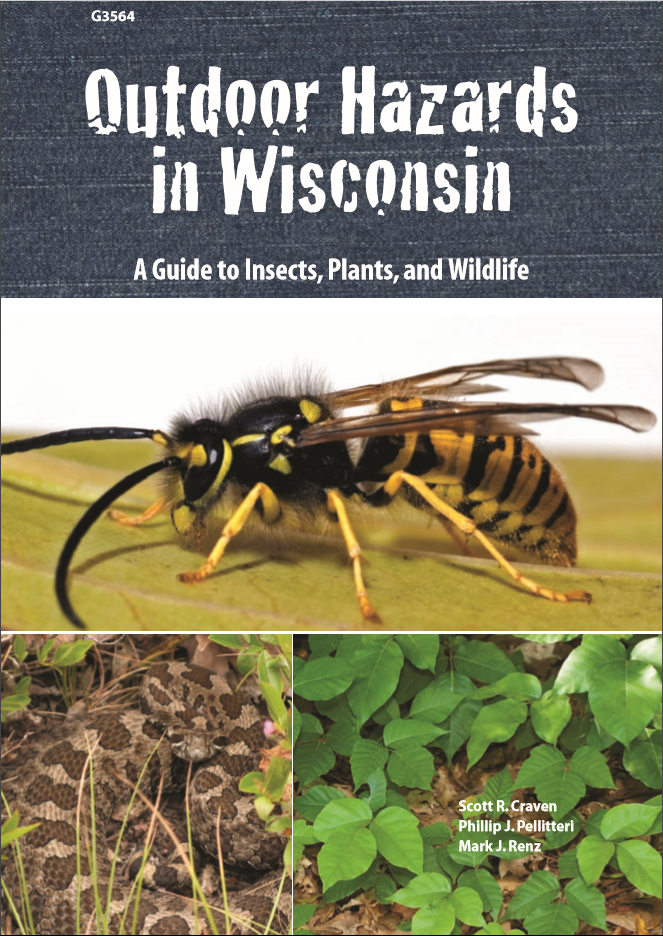 Have you ever walked through a patch of poison ivy or brushed up against wild parsnip? If so, you probably learned an uncomfortable lesson about encountering harmful plants. Luckily, there is a less painful way to learn about dangerous vegetation hidden among Wisconsin’s natural beauty. Now is the time to brush up on hazards you may encounter while working or recreating outdoors.
Have you ever walked through a patch of poison ivy or brushed up against wild parsnip? If so, you probably learned an uncomfortable lesson about encountering harmful plants. Luckily, there is a less painful way to learn about dangerous vegetation hidden among Wisconsin’s natural beauty. Now is the time to brush up on hazards you may encounter while working or recreating outdoors.
Outdoor Hazards in Wisconsin, a guide published by the University of Wisconsin-Madison Division of Extension, will help you recognize, avoid and handle potential problems caused by wildlife, insects and plants. Continue reading “Watch Out!”
Housing Wisconsin: Home Building Trends, Outlook

Housing Market Index (HMI) Survey, March 2025. Source: NAHB/Wells Fargo. / Graphic Credit: Brian Zweifel, Wisconsin DNR
By Brian Zweifel, DNR Forest Products Specialist, Dodgeville
Brian.Zweifel@wisconsin.gov
Variability and uncertainty seem like key words to describe many things right now, but the words apply especially to current housing markets.
The home construction and remodeling industry is a key driver of forest products markets and can be an important indicator of future demand. Softwood lumber and engineered wood products such as oriented strand board, plywood and laminated beams and joists are used in home construction. Hardwood lumber, however, is used to manufacture flooring, cabinets and other millwork items for interior applications.
Continue reading “Housing Wisconsin: Home Building Trends, Outlook”
Rotstop® C No Longer Available In North America
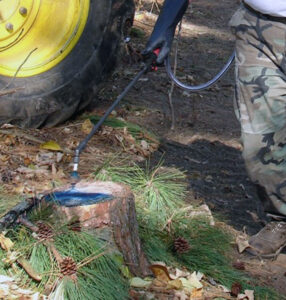
A worker manually applies fungicide, imbued with blue dye, to a freshly cut tree stump to fight the spread of fungal diseases such as Heterobasidion root disease. / Photo Credit: Wisconsin DNR
By Kyoko Scanlon, DNR Forest Pathologist, Fitchburg
Kyoko.Scanlon@wisconsin.gov
The manufacturer, Lallemand Plant Care, recently decided to remove Rotstop® C fungicide from the North American market.
As a result, the product is no longer available for purchase in North America. If you already have the product and have stored it in an appropriate space, you may still use it as a preventative treatment for Heterobasidion root disease (HRD) as long as the expiration date has not arrived.
Continue reading “Rotstop® C No Longer Available In North America”
Web-Spinning Caterpillars Not Spongy Moth
By Linda Williams, DNR Forest Health Specialist, Woodruff
Linda.Williams@wisconsin.gov, 920-360-0665
You may already be seeing the web nests created by eastern tent caterpillars, which hatch early in the spring and start feeding on emerging leaves as the weather warms up.
Eastern tent caterpillars can sometimes be mistaken for forest tent caterpillars or spongy moths. Check out the DNR’s comparison fact sheet, which includes pictures for identification and control options. Continue reading “Web-Spinning Caterpillars Not Spongy Moth”
DNR Offers Two Knotweed Fact Sheets
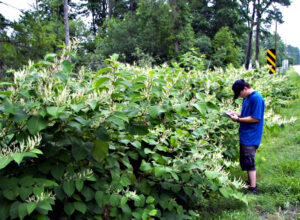
Species in the knotweed complex grow very quickly, causing large infestations on roadsides like this one. / Photo Credit: Randy Westbrooks, Invasive Plant Control, Inc., Bugwood.org
By Wisconsin DNR
With the scourge of knotweed about to gear up for another growing season, the Wisconsin Department of Natural Resources (DNR) is offering information.
The DNR has created two fact sheets to instruct general and urban landowners on the best control methods for the fast-growing invasive plant.
Columbian Timber Beetle Fact Sheet Debuts
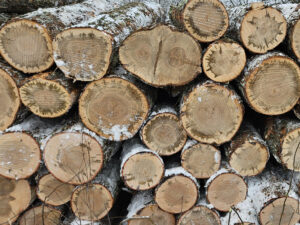
Staining, in the shape of a many-pointed star, is evident in the cut ends of silver maple logs. / Photo Credit: Chris Firgens, Oconto County Forest
By Linda Williams, DNR Forest Health Specialist, Woodruff
Linda.Williams@wisconsin.gov or 920-360-0665
Columbian timber beetle (Corthylus columbianus) is an ambrosia beetle native to the eastern United States.
In Wisconsin, we have had reports of Columbian Timber Beetle (CTB) attacking silver maple in the northeastern and lakeshore areas of the state, dating back to the early 1990s. The insects have caused significant staining from repeated attacks. In southern Wisconsin, CTB can attack oaks to a lesser degree, including bur, northern red and white oak.
Continue reading “Columbian Timber Beetle Fact Sheet Debuts”
Japanese Stilt Grass History StoryMap Debuts
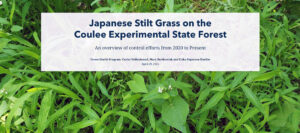
The main page of the Wisconsin Department of Natural Resources’ new StoryMap on Japanese Stilt Grass on the Coulee Experimental State Forest. / Graphic Credit: Carter Hellenbrand, Wisconsin DNR
Carter Hellenbrand, DNR Invasive Plant Field Specialist, Fitchburg
Carter.Hellenbrand@wisconsin.gov
The Wisconsin Department of Natural Resources (DNR) Forest Health program has created a new StoryMap documenting the history of Japanese stilt grass on the Coulee Experimental State Forest in La Crosse County.
Users will be able to see an overview of Japanese stilt grass, how to identify it and what control efforts have been implemented since this plant was discovered in 2020.
Continue reading “Japanese Stilt Grass History StoryMap Debuts”
UW-Madison’s Raffa Talks Trees’ Natural Defenses
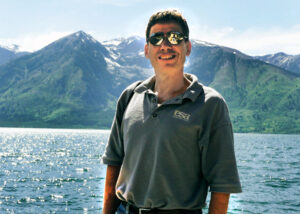
Ken Raffa, professor emeritus with the University of Wisconsin-Madison Department of Entomology. / Photo Credit: University of Wisconsin-Madison
By Art Kabelowsky, DNR Outreach and Communications, Fitchburg
Arthur.Kabelowsky@wisconsin.gov or 608-335-0167
Do you pity the poor tree, forced to stand defenseless against the ravages of insect pests, fungi and disease?
Then, you have not listened to Dr. Ken Raffa discuss the impressive natural defenses trees have developed.
Raffa, a professor emeritus with the University of Wisconsin-Madison’s Entomology Department, recently appeared on Proforest Podforest podcast to discuss the topic “Inside the Tree’s Natural Defense.”
Continue reading “UW-Madison’s Raffa Talks Trees’ Natural Defenses”
